Sitting in the New York Bay are a cluster of four islands – Manhattan, Queens, Brooklyn, and Staten Island – and a section of mainland to the North of them called The Bronx. These are the five boroughs that, together, make up New York City.
Despite this fact, when most people outside the metropolitan area hear “New York City”, they think mainly of Manhattan. Indeed, its 23.7 square miles have become the cultural, artistic, financial, and entertainment hub of New York City in total, and the world.
The magic of Manhattan lies in its fascinating history, and its rich variety of neighborhoods – so many, in fact, that we’ll cover them in two parts, starting with a brief look at the history of Manhattan.
The History of Manhattan In A New York Minute
Manhattan has always been shaped and molded by its culturally diverse inhabitants, starting with the first true native New Yorkers—the Lenape Indians. In fact, the name Manhattan is the English translation of the Lenape word Manna-hata, meaning “island of many hills.”
The Lenape farmed, hunted, and fished on this land while living peaceably among the French, English, and Dutch settlers who gradually established footholds here. In 1626, the Dutch traded 60 guilders’ (about $24) worth of goods with the Lenape for what they believed was ownership of the island. Since the Lenape didn’t believe anyone could truly “own” the land, they understood the trade as a gesture of gratitude for allowing the Dutch to share it.
Despite the colossal misunderstanding, the Dutch claimed ownership of the land, then named New Amsterdam, and built a defensive wall to keep out the Lenape, the English, and other groups. After years of conflict, including the Anglo-Dutch wars, the Dutch ultimately surrendered the land to the English in a 1664 peace treaty. The English renamed it New York, tore down the wall, and paved a street over it, calling it Wall Street.
After the Revolutionary War, New York became the first capital of the United States, where George Washington was inaugurated at Federal Hall in 1789, right on that same Wall Street.
With the immigration boom of the late 1800s, more than 70% of all immigrants entering the U.S. came through New York City—earning it the enduring nickname, The Golden Door. Many of these newcomers made their homes in Manhattan and the surrounding boroughs, creating the cultural mosaic New York is celebrated for today.
The Neighborhoods Of Manhattan – Part One
The unique and varied neighborhoods are the heart and soul of Manhattan. Each has its own exclusive characteristics and charm, with plenty to do and see. Here is an overview of the island’s Northern half.
Upper Manhattan
At the northern tip is Marble Hill. Technically part of Manhattan, it was separated from the island in 1895 by the Harlem River Ship Canal and later attached to the Bronx. From there, a quick stroll or drive over the Broadway Bridge brings you into Inwood—home to lush parks like Inwood Hill and Fort Tryon.
Upper Manhattan also includes Fort George, the arts-forward Washington Heights (with highlights like The Met Cloisters and Hudson River views), and Hamilton Heights, once home to Alexander Hamilton himself.
Harlem & East Harlem
Harlem remains a vibrant epicenter of African-American culture, full of history, music, and soul. From the iconic Apollo Theater to ever-evolving local businesses, the neighborhood buzzes with life. East Harlem—or El Barrio, as it’s affectionately known—still reflects its strong Puerto Rican roots, now interwoven with Mexican, Dominican, and other Latino cultures, all while nodding to the Italian influences of earlier generations.
Morningside Heights, Central Park, The Upper West Side, And The Upper East Side
Just southeast of Harlem is Morningside Heights, the academic heart of the city, with Columbia University, Barnard College, and spiritual landmarks like Riverside Church.
Central Park, still the city’s backyard, stretches across 843 acres and welcomes millions annually for concerts, picnics, jogs, and spontaneous street performances.
To the west is the Upper West Side, a cultural powerhouse with Lincoln Center, the American Museum of Natural History, and a steady buzz of shopping and dining. To the east lies the Upper East Side—classic New York elegance, from the designer windows of Madison Avenue to the galleries and grand institutions of Museum Mile.
Midtown
Between the southern edge of Central Park and 34th Street, Midtown Manhattan shines with landmarks: Broadway, Times Square, the Empire State Building, Rockefeller Center, and the recently revitalized Moynihan Train Hall. It's still where the city turns up its volume, day and night.
Hell’s Kitchen/Clinton
West of Midtown, Hell’s Kitchen—sometimes called Clinton—has transformed over the years but never lost its edge. From cozy ramen joints to Off-Broadway theaters and the Intrepid Museum, it remains a go-to for creative energy and casual cool.
The East Side of Mid-Manhattan
The neighborhoods running from Midtown to the East River bring a quieter yet just as engaging side of the city. Turtle Bay, home to the Chrysler Building and the United Nations, still offers scenic corners and international flair. Murray Hill continues to attract young professionals and trendsetters, while Gramercy remains known for its historic brownstones, leafy squares, and the birthplace of President Theodore Roosevelt.
The Story Continues…
While we’ve only begun telling Manhattan’s story, there’s so much more to uncover. As the classic closing line from The Naked City reminds us:
“There are eight million stories in the naked city. This is one of them.”
Book a stay at The Marmara Park Avenue hotel and enjoy everything Manhattan offers in comfort and elegance.








